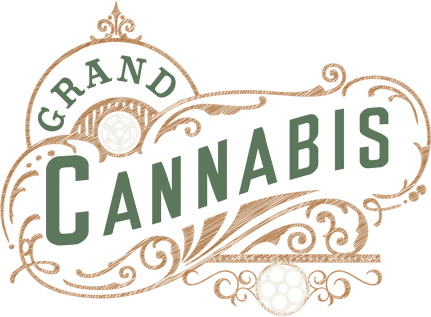The Canadian cannabis market continues to evolve rapidly, driven by consumer preferences, new technologies, and shifting regulations. Recent national surveys and consumer studies provide valuable insights into how Canadians are consuming cannabis, what products they prefer, and where the industry is headed in 2025. Understanding these trends helps both businesses and consumers make informed choices in this ever-changing landscape.
1. Consumption Trends: Edibles and Beverages on the Rise
 Survey data reveals that more Canadians are choosing cannabis edibles and beverages over traditional smoking methods. While flower remains popular, its dominance is gradually declining as consumers seek discreet and smoke-free alternatives.
Survey data reveals that more Canadians are choosing cannabis edibles and beverages over traditional smoking methods. While flower remains popular, its dominance is gradually declining as consumers seek discreet and smoke-free alternatives.
In particular, cannabis drinks infused with nanoemulsion technology are seeing a massive uptick in popularity. These beverages provide fast-acting effects and consistent dosing — two features that appeal to both new and experienced users. Brands like XMG, Sweet Justice, and Ray’s Lemonade are leading the way in this category, providing refreshing and effective THC-infused options.
2. Demographic Shifts: New Consumers Are Joining the Market
Interestingly, cannabis use is expanding beyond the traditional 18–35 demographic. Recent surveys show an increase in consumption among Canadians aged 40–60, particularly those seeking natural wellness alternatives for sleep, anxiety, and pain management. The growing interest in CBD and full-spectrum products supports this shift toward therapeutic use.
Older consumers are also showing preference for low-THC or balanced THC:CBD ratios, favoring predictable effects and mild euphoria. Educational resources, clearer labeling, and improved product consistency have made cannabis more approachable for this audience.
3. The Rise of the Conscious Consumer
 Today’s cannabis consumers care deeply about sustainability, transparency, and product quality. Surveys indicate that over 60% of users check for details like terpene content, batch numbers, and lab results before purchasing. This growing demand for transparency underscores the importance of learning how to read a cannabis label — an essential skill for anyone navigating Canada’s legal market.
Today’s cannabis consumers care deeply about sustainability, transparency, and product quality. Surveys indicate that over 60% of users check for details like terpene content, batch numbers, and lab results before purchasing. This growing demand for transparency underscores the importance of learning how to read a cannabis label — an essential skill for anyone navigating Canada’s legal market.
Brands that communicate their testing standards, local sourcing, and eco-friendly packaging are resonating strongly with this new generation of conscious consumers. Companies such as 1964 Supply Co., Olli, and Truro are earning trust through clear, responsible branding.
4. Popular Product Categories in 2025
According to national data, the top five cannabis product categories for 2025 are:
- 1. Pre-rolls: Consumers love the convenience and craftsmanship of ready-to-smoke options like cannabis pre-rolls.
- 2. Edibles: Gummies and baked goods dominate, with growing interest in high-dose options like strong THC edibles.
- 3. Beverages: Infused drinks continue to expand thanks to nanoemulsion technology.
- 4. Concentrates: Shatter, live resin, and diamonds remain popular among experienced users looking for potency and purity.
- 5. Vapes: Compact, flavorful, and discreet — vapes remain a favorite for their convenience and modern design.
5. Knowledge Gaps and the Need for Education
 While awareness of cannabis products is high, surveys highlight ongoing confusion about dosing, terpenes, and cannabinoid balance. Many consumers still struggle with concepts like decarboxylation and proper storage methods, which can affect potency and experience.
While awareness of cannabis products is high, surveys highlight ongoing confusion about dosing, terpenes, and cannabinoid balance. Many consumers still struggle with concepts like decarboxylation and proper storage methods, which can affect potency and experience.
Educational blogs like Full Spectrum vs. Broad Spectrum vs. Isolate are helping bridge this knowledge gap. They empower consumers to make smarter choices when shopping for cannabis oils, tinctures, and edibles.
6. Consumer Motivation: Beyond Getting High
For many Canadians, cannabis is no longer just about recreation. Surveys reveal that wellness-driven use is steadily rising, especially among adults seeking natural solutions for stress relief, focus, and recovery. Microdosing edibles or low-dose beverages has become particularly popular for maintaining balance throughout the day.
This shift toward intentional use has led to the rise of products that blend function with enjoyment — like beverages containing adaptogens or terpene-enhanced formulations that target specific effects such as relaxation or creativity.
7. Trust and Product Source: The Importance of Legal Retail
Canadians overwhelmingly prefer purchasing from licensed dispensaries rather than the illicit market. Surveys indicate that more than 70% of consumers trust legal sources for their safety, consistent quality, and product testing. Reputable stores provide customers with access to reliable information, staff expertise, and verified brands.
Many users also appreciate that regulated products feature accurate labels and clear batch traceability — critical for health-conscious consumers who prioritize safety.
8. The Future of Cannabis Consumption in Canada
The next wave of cannabis innovation is expected to focus on faster onset times, precise dosing, and functional formulations. Nanoemulsion, terpene customization, and advanced extraction techniques are paving the way for a more personalized cannabis experience.
Looking ahead, consumers can expect even more integration between wellness and cannabis, as brands continue to refine their offerings based on feedback from surveys and consumer data. Transparency, education, and accessibility will remain at the core of this evolving landscape.
Final Thoughts
Canadian cannabis surveys offer a fascinating look into how far the industry has come since legalization — and where it’s headed next. From the rise of THC beverages to the demand for transparency and education, the data reflects a more mature and health-conscious consumer base.
As Canadians continue to explore cannabis for both wellness and enjoyment, trusted resources like our Grand Cannabis Corner remain invaluable for learning, discovery, and staying informed about the latest trends shaping the industry.

